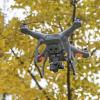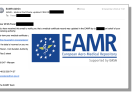Aurigny AT72 enroute on Oct 20th 2013, turbulence injures 2 flight attendants
An Aurigny Air Service Avions de Transport Regional ATR-72-212A, registration G-COBO performing flight GR-600 from Guernsey,CI to London Gatwick,EN (UK) with 59 passengers and 4 crew, was enroute at FL120 near the Isle of Wight in cloud when weather radar indicated a significant cell ahead and some less intense cells to the right about 10nm away parallel to the aircraft track and appeared to form a gap available to the right of the aircraft's track. The crew decided to continue straight towards the cell for some more minutes to utilize the gap between the large and the smaller cells visible on the weather radar. Light turbulence was encountered, the commander illuminated the fasten seat belt signs but did not deem necessary to discontinue cabin service, the first officer began to reduce the speed from 230 to 200 KIAS. The crew requested to deviate right around the large cell, the turbulence abated for about 30 seconds after completing the turn and became clear of cloud, however, experienced a strong downdraft followed by a strong updraft causing the autopilot and autothrust to disconnect and causing the aircraft to climb about 780 feet above FL120. When the aircraft exited the updraft the sensation of a negative G was felt and the left low engine oil pressure indication activated prompting a master warning. As this was a known transient issue the captain calmed the first officer. Neither crew nor ATC commented on the altitude deviation via radio. The first officer returned the aircraft to FL120 and re-engaged autopilot and autothrust about 2 minutes later. Cabin crew reported that one had cut her leg when a trolley overturned in the galley and the other had bumped her head at the cabin ceiling. The flight crew reassured the passengers with a public announcement and continued to London Gatwick for a safe landing. Paramedics dressed the cut of the leg and checked the other flight attendant who had no further repercussions.
The return flight was postponed to permit a replacement crew to position to Gatwick.
The AAIB released their bulletin reporting that the captain stated in a post flight interview that they remained at least 10nm clear of the nearest cell depicted on the weather radar, based on his experience it was not necessary to discontinue cabin service therefore.
The flight data recorder revealed a brief vertical acceleration of -0.3G causing the low engine oil pressure indication. The loads encountered were all within design limits.
The AAIB reported that following the occurrence the airline conducted an internal investigation and changed their documentation to require crew to immediately report to ATC when any unauthorized deviation of more than 300 feet from assigned altitude occurs.
http://avherald.com/h?article=47420e4e














Komentarze